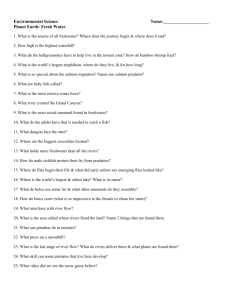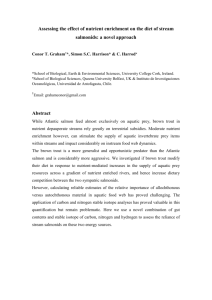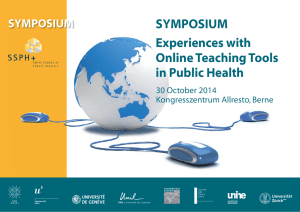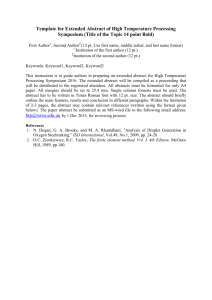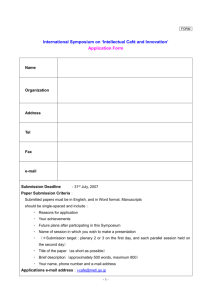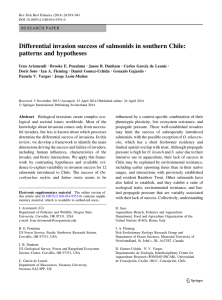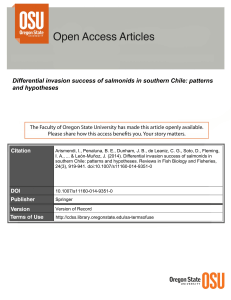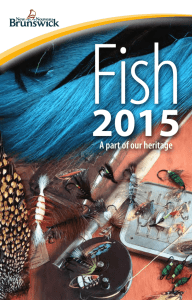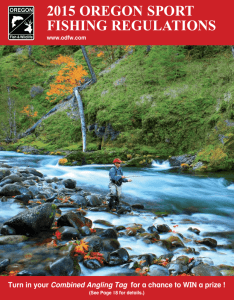here - The Atlantic Salmon Trust
advertisement
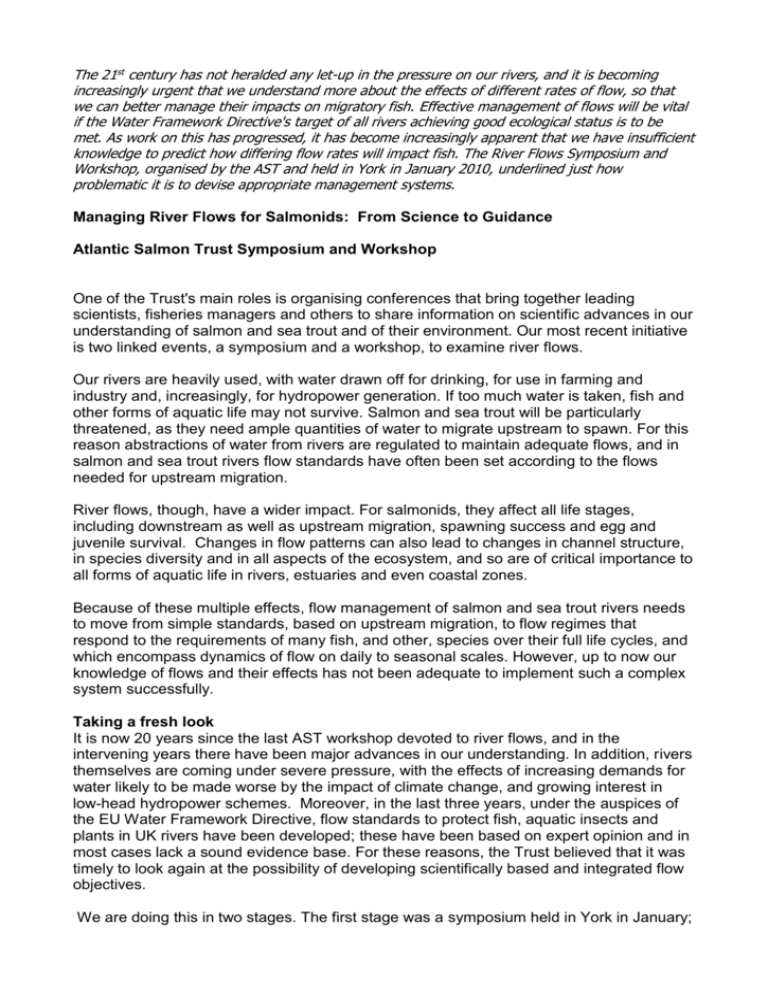
The 21st century has not heralded any let-up in the pressure on our rivers, and it is becoming increasingly urgent that we understand more about the effects of different rates of flow, so that we can better manage their impacts on migratory fish. Effective management of flows will be vital if the Water Framework Directive's target of all rivers achieving good ecological status is to be met. As work on this has progressed, it has become increasingly apparent that we have insufficient knowledge to predict how differing flow rates will impact fish. The River Flows Symposium and Workshop, organised by the AST and held in York in January 2010, underlined just how problematic it is to devise appropriate management systems. Managing River Flows for Salmonids: From Science to Guidance Atlantic Salmon Trust Symposium and Workshop One of the Trust's main roles is organising conferences that bring together leading scientists, fisheries managers and others to share information on scientific advances in our understanding of salmon and sea trout and of their environment. Our most recent initiative is two linked events, a symposium and a workshop, to examine river flows. Our rivers are heavily used, with water drawn off for drinking, for use in farming and industry and, increasingly, for hydropower generation. If too much water is taken, fish and other forms of aquatic life may not survive. Salmon and sea trout will be particularly threatened, as they need ample quantities of water to migrate upstream to spawn. For this reason abstractions of water from rivers are regulated to maintain adequate flows, and in salmon and sea trout rivers flow standards have often been set according to the flows needed for upstream migration. River flows, though, have a wider impact. For salmonids, they affect all life stages, including downstream as well as upstream migration, spawning success and egg and juvenile survival. Changes in flow patterns can also lead to changes in channel structure, in species diversity and in all aspects of the ecosystem, and so are of critical importance to all forms of aquatic life in rivers, estuaries and even coastal zones. Because of these multiple effects, flow management of salmon and sea trout rivers needs to move from simple standards, based on upstream migration, to flow regimes that respond to the requirements of many fish, and other, species over their full life cycles, and which encompass dynamics of flow on daily to seasonal scales. However, up to now our knowledge of flows and their effects has not been adequate to implement such a complex system successfully. Taking a fresh look It is now 20 years since the last AST workshop devoted to river flows, and in the intervening years there have been major advances in our understanding. In addition, rivers themselves are coming under severe pressure, with the effects of increasing demands for water likely to be made worse by the impact of climate change, and growing interest in low-head hydropower schemes. Moreover, in the last three years, under the auspices of the EU Water Framework Directive, flow standards to protect fish, aquatic insects and plants in UK rivers have been developed; these have been based on expert opinion and in most cases lack a sound evidence base. For these reasons, the Trust believed that it was timely to look again at the possibility of developing scientifically based and integrated flow objectives. We are doing this in two stages. The first stage was a symposium held in York in January; this was open to all, and gave scientists, regulators, mangers and others the opportunity to hear and discuss presentations on the latest scientific thinking and on current flow management methods. It was followed by a smaller workshop, with invited participants, to distil the outcome of the symposium into practical best practice guidance for regulators and managers. This was held in Pitlochry at the beginning of March. The symposium was attended by 150 people from over 70 different organisations. It addressed four topics in separate sessions: the scientific basis for setting flow requirements; the changing environmental and legislative context; setting and applying flow standards and managing flows; advances in scientific methods and analysis. Each session ended with a discussion of the key issues raised by the paper. The points raised in these discussions, together with the papers themselves, provided the basic material for the workshop. Most of the symposium presentations will be published as peer-reviewed papers in a special edition of the journal Fisheries Management and Ecology. There is also a webbased Symposium Report, containing summaries of the papers and an overview of the debates, links to which can be found on the AST website. The guidance from the workshop will be published and made available to all with responsibility for, or an interest in, regulating river flows; it will also be on the web.
